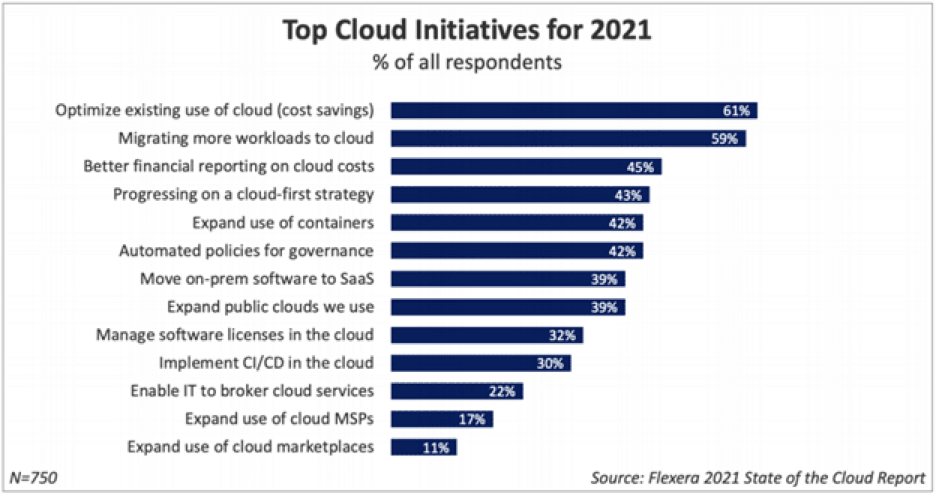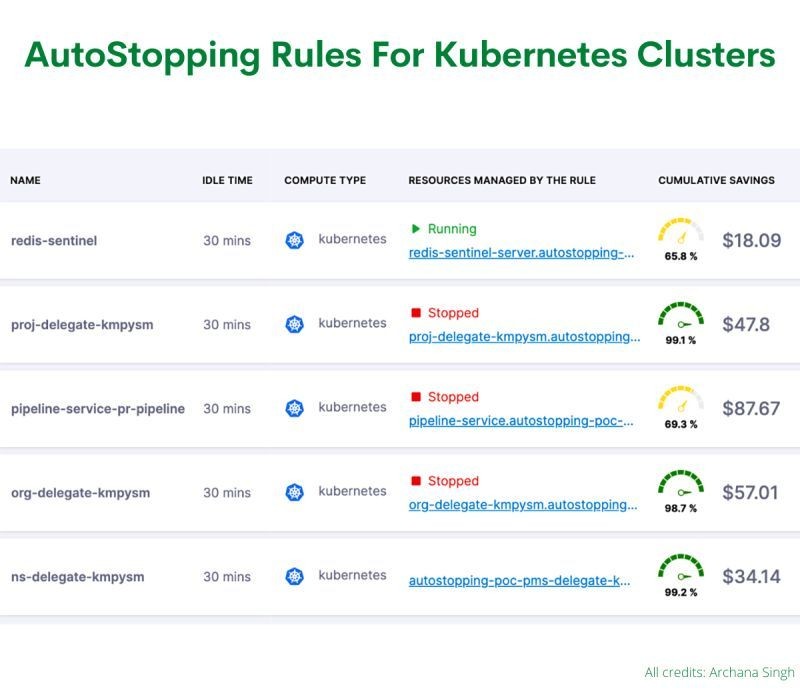Cloud Cost Optimization: Tips To Reduce Your Cloud Costs
Do you know that businesses typically overspend on the cloud by roughly 35%?
Just like there are best practices for using cloud native tools like Docker, Kubernetes, Terraform, Helm Charts, etc., there are techniques to reduce cloud spending on cloud computing resources. But unfortunately, one of the most common mistakes that companies make is not paying close attention to how much they spend on their cloud resources. If you don’t have a firm grip on your cloud spending, it will be difficult for you to optimize them.
Cloud cost optimization (CCO) is a technique of running cloud native applications effectively, at minimal possible cost, without affecting the health of the services. In layman’s terms, it is continuously delivering value with the effective utilization of cloud resources. CCO requires a well-organized strategy, techniques and a robust solution that can let your engineering team know the granular details about the costs involved in running your services.
Cloud cost optimization has been the top priority of most organizations over the last few years, evident from Flexera’s state of the cloud report 2021.

Here are some suggestions that will help you reduce your cloud costs.
- Choosing the right instances is a good practice. Most companies often choose the wrong instance type for their application, which skyrockets their cloud spending. This happens when there is no strategy to reduce cloud usage. It is highly advisable to know about the various instance types offered by the cloud service provider before deploying your service. Rightsizing your resources is essential. Amazon Web Services has more than 300 instance types to offer. The instance should be selected depending on the application and business needs.
- Spot instances can play a vital role in reducing your cloud spending. Spot instances are a cloud’s spare computing resources/capacity offered at a discount by cloud providers such as AWS, Azure and GCP. With spot instances, reliability is not guaranteed — the cloud provider can interrupt these services anytime — but these can be used for batch processing and many other workloads. AWS calls it as spot instance, Azure named them spot VMs, and GCP calls theirs a Preemptible VM instance.
- Setting up budgets is crucial when you’re new to the world of cloud computing. Your monthly budget will depend on your needs. If you only need email hosting, then your monthly budget will be much lower than if you were creating a database-driven website with lots of storage. Once you’ve established a budget for yourself and have a strategy in place, it’s time to start optimizing your cost.
- Employing automation and pay-as-you-go can help save cloud costs. As we know, most of the cloud providers have a pay-as-you-go pricing model where you pay for resources only when you need them. Also, by employing infrastructure as code (IaC) and autoscaling approaches, you can automatically spin up resources when you need them and shut them down when you don’t.
- Switching off idle resources is a fundamental, but significant practice to save money on your cloud bills. One major contributor to overspending is idle and unallocated resources. Fortunately, services like Harness Intelligent Cloud AutoStopping Rules can manage your idle resources dynamically and automatically. They will turn off your resources when they are not in use and turn them back on when you require them. Intelligent Cloud AutoStopping by Harness helps to manage your resources automatically to ensure that they run only when needed, never when idle.
- Developing a cloud spend and cost awareness culture within the organization can help the engineering leaders and the developers understand their own cloud spend. Training and workshops will help everyone become aware of healthy cloud resource utilization and best practices to follow. Giving special attention to weekly or monthly reports on the cloud spend data can help teams get organized and see what mistakes they are making and how they can avoid them.
- Resource consumption limits and alerts can help you identify overspending. For example, while employing Kubernetes for your application deployments, you can specify the resource limits in the deployment YAML file. Also, Harness Cloud Cost Management (CCM) offers recommendations for your Kubernetes clusters by showing resource optimization possibilities that reduce your spending.
Conclusion
As more and more companies adopt cloud services and embrace cloud native techniques to release code fast and scale quickly, it becomes the responsibility of every individual to control their costs and follow best practices. Following these simple suggestions should help you reduce your cloud spending in no time. I hope this article helps you set up a strategy to optimize your cloud costs.
The article is originally published on TheNewStack (Author: Pavan Belagatti)
—————————————————————————————————————
It’s time you manage your resources automatically through AutoStopping Rules.

AutoStopping Rules are a dynamic and powerful resource orchestrator for non-production workloads.
The following are some of the most significant advantages of incorporating AutoStopping Rules into your cloud resources:
➡ Automatically detect idle times and shut down (on-demand) or terminate (spot) resources.
➡ Enable the running of the workloads on fully orchestrated spot instances without worrying about spot interruptions.
➡ Predict idle times statically, especially during work hours.
➡ Allow the accessing of stopped or terminated machines, which is impossible with forceful shutdowns.
➡ Stop cloud resources without computing optimization, only start/stop actions.
Businesses typically overspend on the cloud by roughly 35%.
Stop paying for cloud waste.
Source: Developer Advocacy







